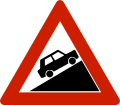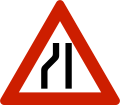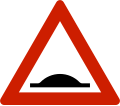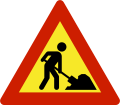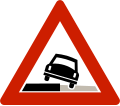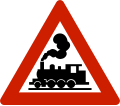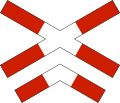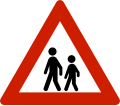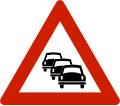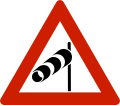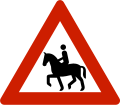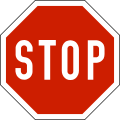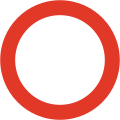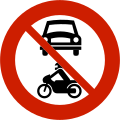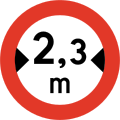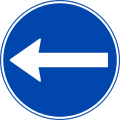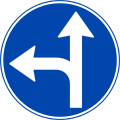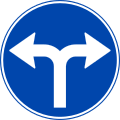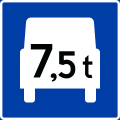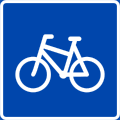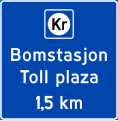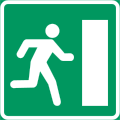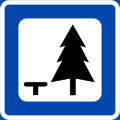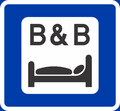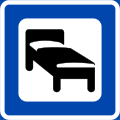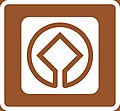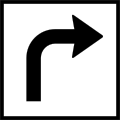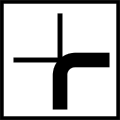
Road signs in the United Kingdom and in its associated Crown dependencies and overseas territories conform broadly to European design norms, though a number of signs are unique: direction signs omit European route numbers, and road signs generally use the imperial system of units, unlike the rest of Europe. Signs in Wales and parts of Scotland are bilingual.

Road signs in Sweden are regulated in Vägmärkesförordningen, VMF (2007:90), and are to be placed 2 metres from the road with the sign 1.6 m from the base for motorized roads. Except for route numbers, there are a maximum of three signs on a pole, with the most important sign at the top. All signs have a reflective layer added on selected parts of the sign as is custom in European countries; most larger signs also have their own illumination.
Road signs in Singapore closely follow those laid down in the traffic sign regulations used in the United Kingdom, although a number of changes over the years have introduced some slight deviations that suit local road conditions. Road signs in Singapore conform to the local Highway Code under the authority of Singapore Traffic Police.
Road signs in Iran are regulated in the INSO 14815-1 standard. They generally follow the Vienna Convention on Road Signs and Signals.

The design of road signs in Poland is regulated by Regulation of the Ministers of Infrastructure and Interior Affairs and Administration on road signs and signals. The Annex 1 to the regulation describes conditions related to usage of the road signs – size, visibility, colors and light reflections, typeface and text, criteria of choosing the type of foil to signs faces, colorful specimens and schematics.

Road signs in South Korea are regulated by the Korean Road Traffic Authority.

Road signs in Finland were formerly regulated in Tieliikenneasetus (5.3.1982/182), but now are currently regulated in Siirtymäsäännökset (8.5.2020/360).

Road signs in the Czech Republic are regulated by the Ministry of Transport and the police. The signs are nearly the same as the European norm, but with small changes. The law governing the road signs is Decree number 30/2001 Sb., many times amended, and replaced by decree 294/2015 Sb., in force since 1 January 2016.

In Japan, road signs are standardized by the "Order on Road Sign, Road Line, and Road Surface Marking (道路標識、区画線及び道路標示に関する命令)" established in 1968 with origins from the Tokyo Metropolitan Police Department's "Order on Standardization of Road Sign" of 1934 and the Home Ministry of Japan's "Order on Road Signs" of 1942. The previous designs have been used since 1986 after several amendments of order.

Traffic signs, installations, and symbols used in Germany are prescribed by the Road Traffic Regulation (StVO) and the Traffic Signs Catalog (VzKat).
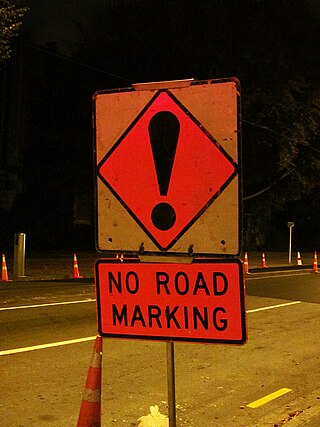
Road signs in New Zealand are similar to those set by the Vienna Convention on Road Signs and Signals. While New Zealand is not a signatory to the convention, its road signs are generally close in shape and function. New Zealand uses yellow diamond-shaped signs for warnings in common with Australia, the Americas, Ireland, Japan and Thailand. Speed limit signs are a red circle with a white background and the limitation in black, and are in kilometres per hour. There are also some signs unique to New Zealand. Road signs in New Zealand are controlled by NZ Transport Agency Waka Kotahi and are prescribed in the Land Transport Rule: Traffic Control Devices 2004 and set out in the Traffic Control Devices (TCD) Manual.

Road signs in Switzerland and Liechtenstein generally conform to the 1968 Vienna Convention on Road Signs and Signals.
Road signs in Ukraine are governed by a combination of standards set out by the Vienna Convention on Road Signs and Signals, the European Union (EU), and Ukraine Transport and Roads Agency. Ukrainian signs are similar to the signs of other post-Soviet states and are set out in 7 separate categories based on meaning: warning, priority, prohibitory, mandatory, information, service, and additional plates.

Road signs in Hong Kong are standardised by the Transport Department. Due to being a former British territory, the road signage in Hong Kong is similar to road signs in the United Kingdom, with the addition of Traditional Chinese characters.

Road signs in Mongolia are similar to the Soviet and other European road sign systems. Road signs are regulated in the MNS 4597:2014 standard and conform to the general pattern of road signs as set out in the Vienna Convention on Road Signs and Signals. Despite the fact that Mongolia was never part of the Soviet Union, the MNS 4597:2014 standard for road signs has many similarities with its post-Soviet counterparts based on the Soviet standard ГОСТ 10807-78 and the Russian standard ГОСТ Р 52290-2004. Mongolia acceded to the Vienna Convention on Road Signs and Signals on December 19, 1997.

Road signs in Georgia are similar to the road sign system of other post-Soviet states that ensure that transport vehicles move safely and orderly, as well as to inform the participants of traffic built-in graphic icons. However, some road signs look a bit different from Soviet ones and closer to the European ones. These icons are governed by the Vienna Convention on Road Traffic and Vienna Convention on Road Signs and Signals.

Road signs in Kazakhstan are similar to the road sign system of other post-Soviet states that ensure that transport vehicles move safely and orderly, as well as to inform the participants of traffic built-in graphic icons. These icons are governed by the Vienna Convention on Road Traffic and Vienna Convention on Road Signs and Signals. Road signs are regulated by the СТ РК 1125-2021 standard.

Road signs in Kyrgyzstan are similar to the road sign system of other post-Soviet states that ensure that transport vehicles move safely and orderly, as well as to inform the participants of traffic built-in graphic icons. These icons are governed by the Vienna Convention on Road Traffic and Vienna Convention on Road Signs and Signals.
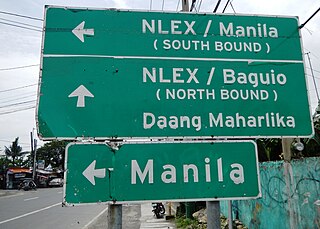
Road signs in the Philippines are regulated and standardized by the Department of Public Works and Highways (DPWH). Most of the signs reflect minor influences from American and Australian signs but keep a design closer to the Vienna Convention on Road Signs and Signals, to which the Philippines is an original signatory. The Philippines signed the convention on November 8, 1968, and ratified it on December 27, 1973.

Road signs in Ecuador are regulated in Manual Básico de Señalización Vial and Reglamento Técnico Ecuatoriano. RTE INEN 004-1:2011. Señalización vial, which is based on the United States' Manual on Uniform Traffic Control Devices (MUTCD) originally developed by the Federal Highway Administration (FHWA). Thus, road signs in Ecuador are similar in design to road signs used in the United States. One of the differences is that Ecuador uses the metric system, for example, vehicle speed is measured in km/h.





